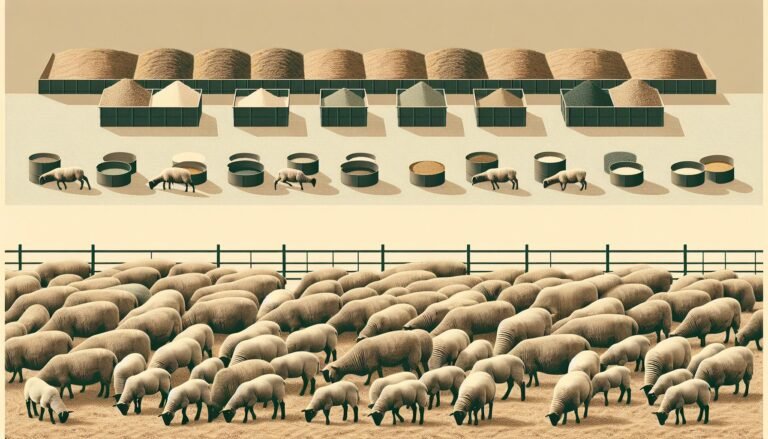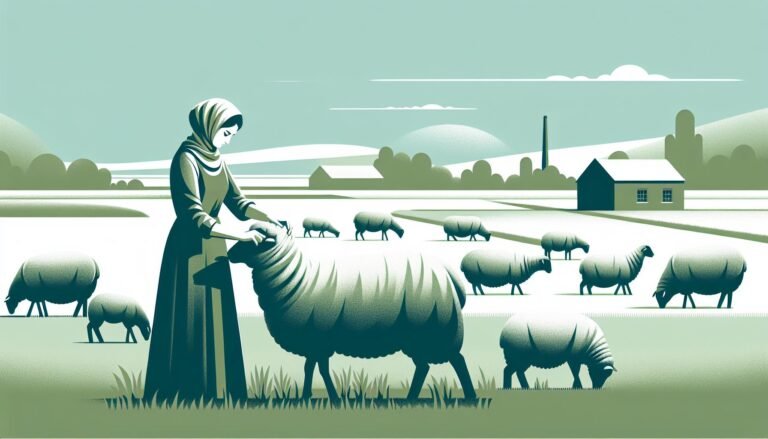What Keeps You Warmer: Wool or Leather?
Introduction
The quest for the coziest, most thermally efficient material has been an ongoing debate for decades. The contenders? Wool and leather, two of the most iconic materials in the world of fashion and outdoor gear. Each has its legion of loyal followers, swearing by the unparalleled warmth these materials provide. But which one truly holds the crown? In this comprehensive guide, we will explore the unique thermal properties of each material, delve into the science behind their warmth, and finally put to rest the great debate of wool vs. leather.
Why Understanding Thermal Properties Matters
You may think choosing between wool and leather is merely a matter of fashion, but the implications run much deeper. The material you opt for can significantly impact your comfort, health, and even safety during cold weather. Whether you’re braving a snowstorm or simply stepping out for a quick errand on a chilly day, the fabric you’re wrapped in can be a game-changer.
Teaser: The Battle for the Warmest Material
In the following sections, we’re going to dissect each material’s thermal attributes, their pros and cons, and their suitability for different scenarios. From fashionistas to mountaineers, this article aims to provide a well-rounded view that caters to a wide audience. So buckle up; this is going to be an enlightening ride!

The Basics of Warmth
What Is Warmth?
Warmth is a multifaceted concept that extends beyond the simple notion of ‘feeling hot.’ It’s an intricate interplay of various factors, including ambient temperature, wind speed, and moisture levels. These elements collectively contribute to our perception of warmth or coldness.
Factors Affecting Warmth
- Temperature: The most straightforward factor. The higher it is, the warmer you feel.
- Wind: Even a light breeze can steal away your body heat, making you feel colder.
- Moisture: Humidity can either enhance or reduce the feeling of warmth. High moisture levels can make hot temperatures feel hotter, while moisture loss from the body in cold conditions can make you feel even colder.
How Do We Measure Warmth?
Warmth is not just a subjective feeling but can be quantified through scientific metrics. There are specific ways to evaluate a material’s thermal efficiency, and they are crucial for anyone who wants to make an informed choice.
- Thermal Resistance: This is a measure of how well a material can resist the flow of heat. The higher the thermal resistance, the better the material is at keeping you warm.
- Heat Retention: This refers to the ability of a material to maintain a warm temperature over time. Materials with good heat retention will keep you warm for longer periods.
- Wicking Properties: This measures how well a material can move moisture away from your skin, which is crucial for maintaining warmth. Wet skin loses heat much faster than dry skin.
The Wool Story
When it comes to wool, it’s not just about sheep anymore. The wool universe is vast, encompassing a variety of animals and several types of fibers. In this section, we’ll go beyond the surface fluff to dig into the nitty-gritty of wool as a material, especially focusing on its thermal properties.
What Is Wool?
Wool is a natural fiber obtained from animals like sheep, goats (Cashmere & Mohair), and even rabbits (Angora). Each type of wool has its distinct characteristics, but the one that often steals the limelight for its thermal properties is Merino wool. Merino wool is renowned for its ultra-fine fibers that offer exceptional warmth without the bulk. But let’s not forget other types like Cashmere, Angora, and the underrated Yak Wool—each with its own set of thermal attributes.
Wool’s Thermal Qualities
Wool is a powerhouse when it comes to insulation. The fibers have a natural crimp, which helps trap air, creating an insulating layer that keeps you warm. But that’s not all; wool is also a moisture-wicking champion. Unlike synthetic materials that can make you feel clammy in damp conditions, wool wicks moisture away from your skin, keeping you dry and, consequently, warmer.
- Insulating Properties: Wool’s ability to trap air makes it one of the best natural insulators.
- Moisture-Wicking Capabilities: Wool can absorb a good amount of moisture without feeling wet, allowing you to remain comfortable in varying conditions.
- Breathability: Another feather in wool’s cap is its breathability. The fibers allow for excellent air circulation, which means you won’t feel stifled even if you’re layered up.
Pros and Cons of Wool
While wool is a fantastic material, it’s not without its downsides. Let’s weigh the good against the not-so-good.
List of Advantages
- Natural: Wool is a 100% natural material, which makes it biodegradable and a hit among eco-conscious consumers.
- Renewable: As long as there are sheep, we’ll have wool. It’s a renewable resource, which again adds to its eco-friendly credentials.
- Odor-Resistant: Wool fibers naturally wick away moisture, making it less likely for odors to stick.
List of Disadvantages
- Cost: High-quality wool like Merino and Cashmere can be expensive.
- Care Requirements: Wool requires special care, including hand-washing and line drying, which may not be convenient for everyone.
The Leather Lowdown
Leather has long been associated with luxury, durability, and—of course—warmth. Whether it graces the interior of high-end cars or molds itself into a bespoke pair of boots, leather’s appeal is timeless. In this section, we’ll explore the thermal properties of this age-old material, which has been humanity’s go-to choice for everything from armor to upholstery.
What Is Leather?
At its core, leather is tanned animal hide. The process of tanning not only preserves the material but also enhances its qualities, making it more durable and less susceptible to decay. Types of leather range from Full-grain and Top-grain to more affordable options like Genuine leather and Faux leather. Each type has its own set of characteristics, but when it comes to warmth, Full-grain and Top-grain usually take the cake due to their denser structure.
Leather’s Thermal Qualities
Leather’s claim to thermal fame lies in its natural structure. Composed of tightly packed fibers, leather offers solid resistance against both wind and water. However, this density is a double-edged sword. While it keeps the elements out, it also traps moisture in, which can be an issue in certain conditions.
- Insulating Properties: Leather’s dense fiber structure makes it excellent at blocking out the cold, but it doesn’t offer the same level of insulation as wool.
- Water-Resistance: Unlike wool, which can absorb moisture, leather tends to repel water, making it a good choice for damp conditions.
- Wind-Resistance: If you’re looking for a material that can block the wind, leather is a strong contender.
Pros and Cons of Leather
Leather is a complex material with both strong advantages and some limitations. Here’s a breakdown:
List of Advantages
- Durable: One of the most significant advantages of leather is its durability. A well-cared-for leather jacket can last decades.
- Timeless Aesthetic: Leather has an ageless appeal that transcends fleeting fashion trends.
- Water-Resistant: Leather’s natural water resistance makes it suitable for wet conditions, although it’s not entirely waterproof.
List of Disadvantages
- Not Breathable: Leather’s density, while good for blocking wind and water, also makes it less breathable.
- Heavy: Leather garments and gear tend to be heavier compared to their wool counterparts, making them less ideal for activities that require a lot of movement.
Head-to-Head: Wool vs Leather
So, you’ve heard the tales of both wool and leather. Now, it’s time to pit them against each other in various categories that matter the most when considering warmth. Whether it’s insulation, durability, or ethical considerations, we’re about to delve into a comparative analysis that will help you make an informed choice.
Insulation Comparison
When it comes to staying warm, insulation is arguably the most critical factor. Both wool and leather have their merits, but how do they stack up when compared directly? Let’s take a look.
| Property | Wool | Leather |
|---|---|---|
| Thermal Resistance | High | Moderate |
| Heat Retention | Excellent | Good |
| Breathability | Good | Poor |
Wool excels in thermal resistance and heat retention, thanks to its natural fiber structure that traps air effectively. Leather, although good at keeping the cold out, doesn’t have the same insulating capabilities as wool. However, it does offer moderate heat retention.
Durability Showdown
Both materials are known for their longevity, but they serve different purposes and are suited to varying conditions.
- Wool: Wool is relatively durable and can last for several years with proper care. However, it’s not as resistant to abrasion or tearing as leather.
- Leather: When it comes to resilience, leather is almost unparalleled. A well-maintained leather item can last for decades, resisting wear and tear to a great extent.
Ethical Considerations
As consumers become increasingly aware of ethical and environmental impacts, it’s crucial to consider these aspects when choosing between wool and leather.
Sustainability
- Wool: Wool is renewable and biodegradable, making it a more sustainable choice. However, large-scale sheep farming has its environmental drawbacks, including land and water usage.
- Leather: While leather is a byproduct of the meat industry, the tanning process often involves harsh chemicals, impacting its sustainability credentials.
Animal Welfare
- Wool: Most wool is sheared from sheep without causing harm, although practices can vary.
- Leather: Leather production involves the death of the animal and can raise ethical concerns depending on your viewpoint.
Real-Life Scenarios
When it comes to choosing between wool and leather, theoretical knowledge is one thing, but how do these materials hold up in actual, everyday scenarios? Whether you’re an adventurer or simply someone who wants to make an informed choice for daily wear, this section is for you.
Outdoor Adventures
- Wool: If you’re into hiking, camping, or skiing, wool is often the go-to fabric. Its breathability and moisture-wicking capabilities make it ideal for fluctuating temperatures and high-exertion activities. Plus, wool’s natural odor resistance means you won’t have to worry about smelling like you fought a bear and lost.
- Leather: Leather may not be the first choice for these activities due to its weight and lack of breathability. However, for specific uses like motorcycling, the wind and water resistance of leather can be beneficial.
Daily Commute
- Wool: For the daily grind of commuting, wool provides a comfortable and stylish option. Whether it’s a wool coat or a Merino wool sweater, you’ll stay warm without sacrificing style.
- Leather: While a leather jacket may be iconic, it may not be the most practical for all weather conditions. However, it’s excellent for making a style statement and does provide good wind protection.
Special Events
- Wool: When it comes to formal events or parties, woolen garments like a fine Merino wool suit can offer a blend of style and comfort.
- Leather: Leather can be a bold choice for special events, especially if you’re looking to stand out. Whether it’s leather shoes or a leather dress, this material can make quite the impression.
User Experiences
Wool Enthusiasts
“Before I switched to Merino wool socks, I used to struggle with cold feet during my winter hikes. Now, even in sub-zero temperatures, my feet feel toasty warm,” says Sarah, an avid hiker.
Leather Aficionados
“I’ve had my leather jacket for over 10 years, and it’s as good as new. Not only does it keep me warm, but it also feels like a second skin,” shares Mark, a motorcycling enthusiast.
Expert Opinions
William Lawrence Balls, a textile scientist, states, “Wool fibers have a natural ability to regulate temperature, making it a versatile choice for various climates.” In contrast, fashion designer Robert Langley mentions, “Leather’s thermal capabilities are often overlooked. While it may not be as insulating as wool, it offers excellent wind and water resistance.”

Conclusion
The journey through the thermal worlds of wool and leather has been enlightening, to say the least. Both materials have their merits and drawbacks, making the choice between them highly situational.
- Wool emerges as the winner in terms of natural insulation, moisture-wicking capabilities, and breathability. It’s a versatile material that adapts well to varying conditions, making it suitable for everything from outdoor adventures to daily wear. Its ethical and environmental profiles are generally positive, but there are considerations like cost and care requirements.
- Leather, on the other hand, scores high on durability, water resistance, and wind resistance. It’s a material that stands the test of time, both in style and substance. However, it falls short on breathability and can be quite heavy.
So, if you’re looking for the warmest material, wool takes the cake. But if you’re after durability and a timeless look, leather is hard to beat. At the end of the day, the best material for you depends on your specific needs, lifestyle, and ethical considerations.
Further Reading
If this article has sparked your curiosity, and you’re eager to learn more, here are some articles that delve deeper into the subject matter:
- Is Merino Wool Soft? Unveiling the Comfort of Nature’s Finest Fiber
- The Hidden Gem of the Himalayas: Yak Wool
- Understanding Cashmere Pilling: A Comprehensive Guide
If you found this article helpful, why not explore our extensive library of wool and leather-related topics? Dive into our wool category or leather category (coming soon!) for more in-depth articles and guides that are sure to keep you engaged and informed.







